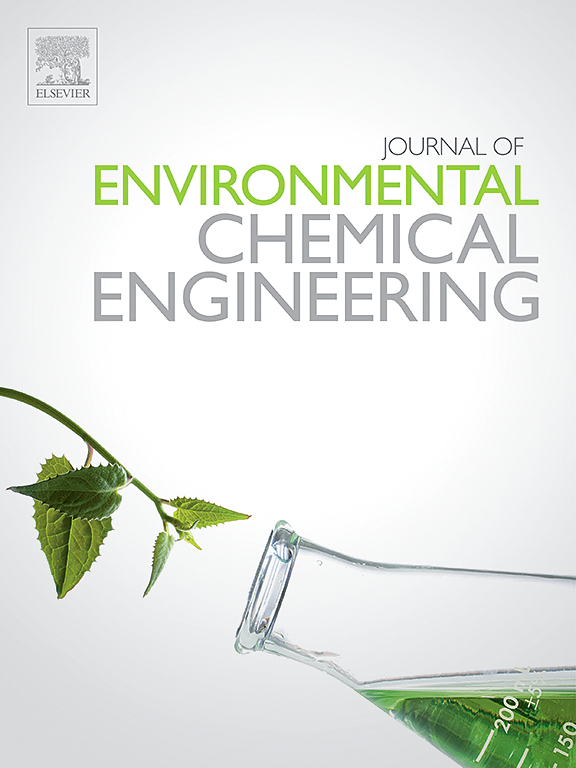Silver nanoparticles supported on short magnetic PVA/PEI nanofibers for the reduction of 4-nitrophenol
IF 7.4
2区 工程技术
Q1 ENGINEERING, CHEMICAL
引用次数: 0
Abstract
Silver nanoparticles (Ag NPs)-based nanomaterials are effective catalysts for a wide range of reactions. The recyclability and efficient catalytic properties of Ag-based nanocatalysts have been the focus of significant research interest. Herein, to address these challenges, we incorporated Fe3O4 nanoparticles (NPs) into a polyvinyl alcohol/polyethyleneimine (PVA/PEI) solution to fabricate PVA/PEI@Fe3O4 nanofibrous mats via electrospinning. Subsequently, the magnetic nanofibrous mats were homogenized to produce short magnetic nanofibers, which can be easily separated from the solution using a magnet. These short PVA/PEI@Fe3O4 nanofibers were then immersed in an aqueous solution of AgNO3 to adsorb and reduce Ag ions, resulting in the formation of Ag NPs with an average diameter of approximately 15 nm, uniformly dispersed on the nanofiber surface. The resulting short PVA/PEI@Fe3O4/Ag nanofibers exhibit excellent catalytic activity for the reduction of 4-NP, achieving a high conversion rate of 97.0 %. Furthermore, they demonstrated remarkable recyclability, maintaining high catalytic activity throughout six consecutive cycles. The short magnetic nanofibers proposed in this study are anticipated to facilitate the practical application of electrospun nanofibers in the catalytic removal of pollutants.
求助全文
约1分钟内获得全文
求助全文
来源期刊

Journal of Environmental Chemical Engineering
Environmental Science-Pollution
CiteScore
11.40
自引率
6.50%
发文量
2017
审稿时长
27 days
期刊介绍:
The Journal of Environmental Chemical Engineering (JECE) serves as a platform for the dissemination of original and innovative research focusing on the advancement of environmentally-friendly, sustainable technologies. JECE emphasizes the transition towards a carbon-neutral circular economy and a self-sufficient bio-based economy. Topics covered include soil, water, wastewater, and air decontamination; pollution monitoring, prevention, and control; advanced analytics, sensors, impact and risk assessment methodologies in environmental chemical engineering; resource recovery (water, nutrients, materials, energy); industrial ecology; valorization of waste streams; waste management (including e-waste); climate-water-energy-food nexus; novel materials for environmental, chemical, and energy applications; sustainability and environmental safety; water digitalization, water data science, and machine learning; process integration and intensification; recent developments in green chemistry for synthesis, catalysis, and energy; and original research on contaminants of emerging concern, persistent chemicals, and priority substances, including microplastics, nanoplastics, nanomaterials, micropollutants, antimicrobial resistance genes, and emerging pathogens (viruses, bacteria, parasites) of environmental significance.
 求助内容:
求助内容: 应助结果提醒方式:
应助结果提醒方式:


